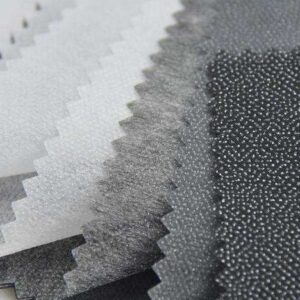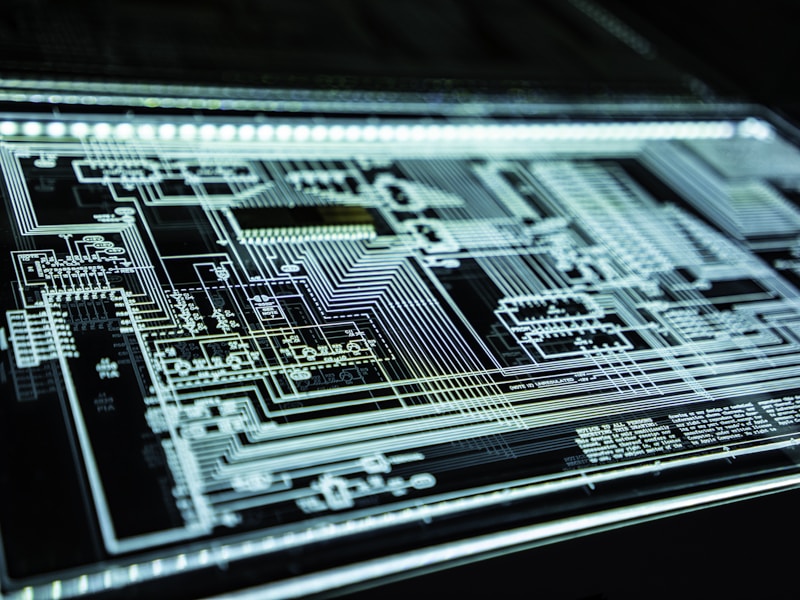What is nonwoven interlining?
Do your garments lack that crisp, professional finish? This can make even well-made clothes look cheap and shapeless. The secret to structure is often hidden inside the fabric.
Nonwoven interlining is a textile made from fibers bonded together by heat or chemicals, not woven or knitted. It is placed between layers of fabric to provide shape, support, and stability to specific areas of a garment, like collars and cuffs.
Understanding this basic definition is the first step. Nonwoven interlining is the unseen "skeleton" that gives a garment its form and quality feel. But knowing what it is and knowing how to use it are two different things. To choose the right one, you need to understand its specific applications and how it differs from its woven counterpart.
What is non-woven interlining used for?
You see a crisp collar and wonder how it stays so sharp. Without knowing the right material, you cannot replicate that quality. Let\'s look at what nonwoven interlining actually does.
Nonwoven interlining is used to give shape and support to garments. It is most commonly found in collars, cuffs, waistbands, and pocket flaps to add stiffness, prevent stretching, and create a smooth, professional look.
At Golden Lily, we have three production lines dedicated just to nonwoven interlining base fabrics. We know this material is fundamental to the garment industry. It’s a functional component that elevates the final product. A customer might not see the interlining, but they will definitely see and feel the result of a good one. Our job is to create a base fabric that provides the perfect balance of support and softness, tailored exactly to the needs of the final garment. We focus on producing material that is uniform, reliable, and safe for skin contact, giving our clients a foundation they can trust.
Material Composition and Feel
The performance of an interlining starts with its raw material. We primarily work with two popular options.
| --- | ||||||
|---|---|---|---|---|---|---|
| 100% Polyester | Cost-effective, stable, available in various stiffness levels. | Standard applications in shirts, blouses, and trousers. | ||||
| Polyester/Nylon Blend | Softer hand-feel, better toughness, and more flexibility (elongation). | High-quality garments where a softer, more resilient structure is needed. |
While all-nylon interlining exists, it is rarely used because it is difficult and expensive to produce. The choice between polyester and a blend depends entirely on the desired feel of the final garment.
Customization and Quality
We can customize our polyester interlinings to achieve a specific feel, from very soft to very hard. Our weight range of 16-150 gsm covers everything from delicate blouses to heavy outerwear. Quality is our priority. We can produce our interlinings without fluorescent whitening agents, and our production lines for white and colored fibers are completely separate to prevent contamination. This ensures a clean, pure white base. Most importantly, our products meet the OEKO-TEX CLASS 1 standard, the highest level of safety, making them suitable even for baby clothes.
What\'s the difference between woven and nonwoven interlining?
Choosing between woven and nonwoven interlining seems complex. This choice impacts your production costs, material waste, and the final look of your garment. I\'ll lay out the differences clearly for you.
The main difference is structure. Woven interlining has threads like fabric, giving it a grain and drape. Nonwoven interlining is a sheet of bonded fibers, so it has no grain, is more stable, and is cheaper to produce.
I recall working with a client who manufactured dress shirts. They had always used woven interlining, but their cutting room was generating a lot of waste. Because woven interlining has a grain, they had to be very careful about how they placed their pattern pieces. We introduced them to our nonwoven interlining. Since it has no grain direction, they could arrange their pattern pieces much more tightly on the fabric sheet. They reduced their material waste by over 10% and simplified their cutting process. This is a perfect example of how choosing the right type of interlining goes beyond just the garment\'s feel; it directly affects your production efficiency and bottom line.
A Head-to-Head Comparison
Let\'s break down the key differences in a table to make the choice easier.
| --- | ||||||
|---|---|---|---|---|---|---|
| Structure | Threads are woven in a warp and weft pattern, like regular fabric. | Fibers are bonded together randomly using heat or chemicals. | ||||
| Grain Direction | Has a grain. Must be cut carefully to match the stretch and hang of the main fabric. | Has no grain. Can be cut in any direction, reducing waste and simplifying layout. | ||||
| Drape & Feel | Tends to be softer with more drape, mimicking the feel of the outer fabric. | Can be engineered from very soft to very stiff. More stable and less prone to stretch. | ||||
| Cost | More expensive to produce due to the weaving process. | More cost-effective. The production process is faster and simpler. | ||||
| Consistency | Can have slight variations common in woven goods. | Offers excellent uniformity and consistent thickness across the entire sheet. |
Ultimately, woven interlining is a great choice when you need the interlining to behave exactly like a fabric, with similar stretch and recovery. Nonwoven interlining is the superior choice for consistency, stability, and cost-efficiency, especially in large-scale manufacturing.
Conclusion
Nonwoven interlining provides cost-effective structure for garments. Its main advantages are consistency, lack of grain, and high customizability, making it a smart choice for efficient and high-quality manufacturing.
Related Articles
Hello world!
Welcome to WordPress. This is your first post. Edit or
How do you choose the right thermal bonding nonwoven fabric?
Choosing the wrong nonwoven material is a costly mistake. This
How non-woven fabric become water resistance
Non-woven fabrics are naturally quite absorbent due to their structure

Li Sun
With over 15 years of experience in non-woven fabric manufacturing, I lead our R&D team at Hangzhou Golden Lily. My expertise includes developing innovative filtration materials and sustainable packaging solutions.



